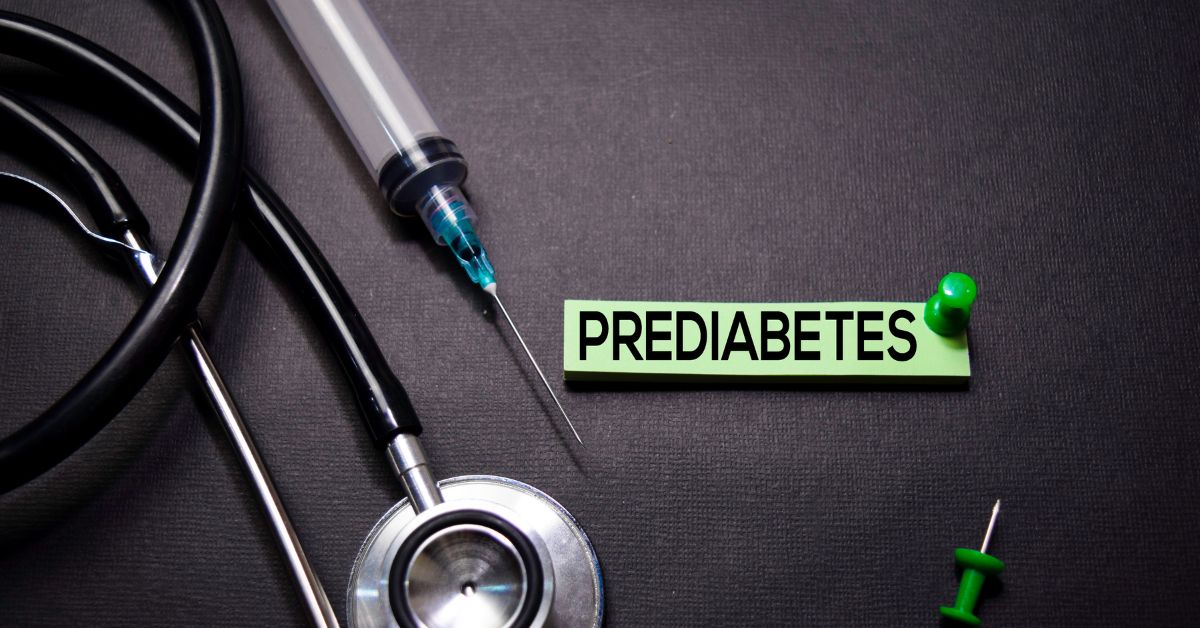Prediabetes – Causes, Symptoms and Treatment


Overview
When you have a higher than normal blood sugar level, but not to the level that indicates diabetes , you are said to have prediabetes. If you do not take any corrective action, you have a higher chance of developing type 2 diabetes. It may show symptoms. Blood sugar level testing can help determine if you have it. If you are at risk of developing diabetes, you need to make lifestyle changes like exercising, eating healthy, and losing weight to reverse prediabetes and avoid type 2 diabetes.
What is Prediabetes?
Prediabetes is a warning sign of type 2 diabetes. Also known as impaired fasting glucose or impaired glucose tolerance, it means that your blood sugar is higher than normal. But, still not high enough to be diagnosed as type 2 diabetes. Prediabetes is reversible. If you make necessary lifestyle changes, you can prevent prediabetes from advancing to type 2 diabetes.
Request an appointment at Apollo Hospitals
What are the Symptoms of Prediabetes?
It usually has no signs or symptoms. You may, however, experience the following.
- Acanthosis nigricans, which is darkened skin usually seen in your armpit, neck, elbows, knuckles, and knees
- Small skin growths or skin tags
- Changes in the eye can cause diabetic retinopathy (damage to the blood vessels of the eyes)
- Symptoms such as increased thirst, increased urination, excess hunger, blurred vision, and fatigue can indicate that you have moved onto type 2 diabetes.
What are the risk factors?
- Weight: Primary risk factor is being overweight
- Waist size: A large waist size is an indication of insulin resistance
- Inactivity: The less active you are, the higher is your risk.
- Diet: Eating processed meat and red meat, and drinking sugar-sweetened beverages, is linked to a higher risk of prediabetes
- Age: While diabetes can develop at any age, risk of prediabetes rises after age 45
- Family history: Your risk of prediabetes rises if you have a parent or sibling with type 2 diabetes.
- Gestational diabetes. If you had diabetes while pregnant (gestational diabetes), you and your child are at higher risk.
- Polycystic ovary syndrome
- Sleep: People with obstructive sleep apnea have increased risk of insulin resistance
- Tobacco smoke: Smoking may increase insulin resistance.
What are the Causes of Prediabetes?
The common source of glucose is the food that you eat. This glucose gets broken down into sugar. The sugar enters your bloodstream into your cells with the help of an enzyme called insulin which is released from the pancreas. In prediabetes, the sugar (glucose) does not get processed correctly due to the lack of insulin response by the cells. It results in a build-up of the sugar in your blood, leading to prediabetes. The cause for this insulin resistance is unknown. However, certain factors like being overweight and having a sedentary lifestyle can contribute to prediabetes.
When Should you Consult a Doctor?
You should consult a doctor if you observe any of the signs mentioned above . If you are at risk of type 2 diabetes, you should contact your doctor to perform a blood sugar screening regularly to be aware of your blood sugar levels. You can
Request an appointment at Apollo Hospitals
Call 1860-500-1066 to book an appointment
What is the Treatment for Prediabetes?
The goal of treatment is to prevent progression to type 2 diabetes. The following lifestyle changes are advised:
- Eating healthy foods such as those high in fiber and low in calories and fats. Your focus should be on vegetables, fruits, and whole grains.
- Regular exercise
- Losing weight
- Stopping smoking
- Managing stress
- Treating sleep disorders
- If you are at a high risk of developing diabetes, your doctor might prescribe certain medications to manage your cholesterol and high blood pressure.
If children have prediabetes, the following lifestyle changes are recommended for them
- Losing weight
- Consuming foods that are higher in fiber and low in fats and refined carbohydrates
- Reducing portion size
- Limiting the frequency of eating out
- Increasing your physical activity to at least one hour per day
Conclusion
Prediabetes is a precursor to type 2 diabetes. It increases your chances of getting diabetes, heart disease, and stroke. To prevent your prediabetes from progressing to type 2 diabetes and its related complications, regular blood sugar testing and screening tests can help you stay healthy. Lifestyle changes like regular exercise, diet, and losing weight can also help reverse your prediabetes.
Frequently Asked Questions (FAQs)
What are the Early Warning Signs for Prediabetes?
A hemoglobin A1C (HbA1c) level of 5.7% or higher is the primary indicator for prediabetes. Other factors that increase your risk are being overweight, older than 45 years, smoking, having a sedentary lifestyle, or having a family history of type 2 diabetes or prediabetes.
Which Tests identify Prediabetes?
Fasting plasma glucose test and oral glucose tolerance test, glycosylated hemoglobin test (HbA1c) can help identify prediabetes.
What are the Complications of Prediabetes?
Complications of prediabetes are likely to occur when it progresses to type 2 diabetes. Diabetes can cause complications like heart disease, stroke, high blood pressure, high cholesterol, kidney disease, nerve damage, vision problems.
Can Prediabetes be reversed ?
Yes. With the right blend of exercise, diet, and lifestyle changes.
© Copyright 2024. Apollo Hospitals Group. All Rights Reserved.
 +91 8069991061
Book Health Check-up
Book Health Check-up
Book Appointment
Book Appointment
+91 8069991061
Book Health Check-up
Book Health Check-up
Book Appointment
Book Appointment







